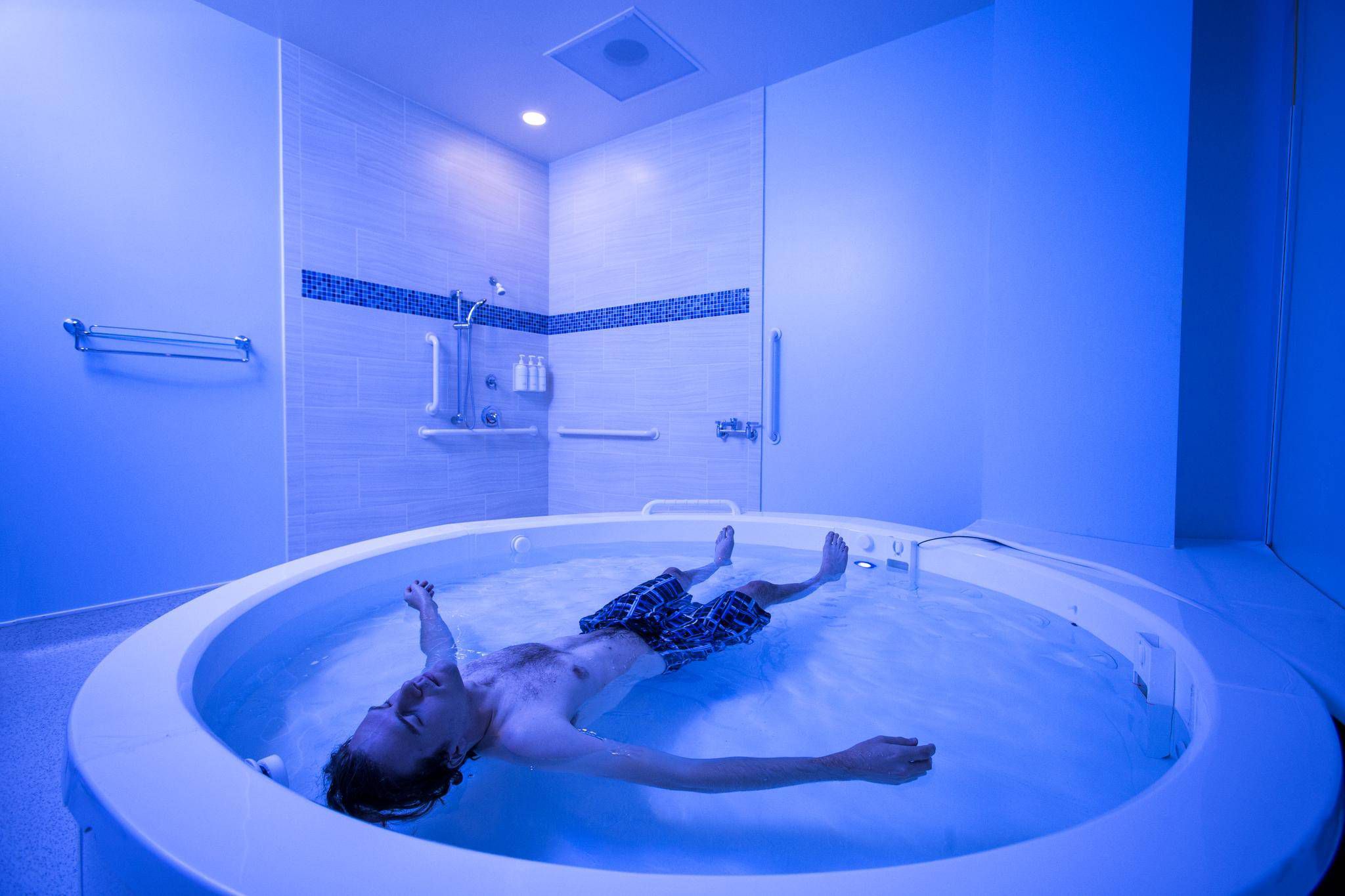Float Therapy For Beginners – What Is It And What Are The Benefits?
Float tanks have become very popular over the last couple of years. By floating inside a float tank in a meditation-like state, you can improve your circulation and mental health. Read on to find out more about float tanks and their benefits.
What Is A Float Tank?
A float tank, also known as a floatation tank, a sensory deprivation tank, or an isolation tank, is a tank filled with 300 millimetres of Epsom salt and water heated to the outer skin temperature. The high salt concentration of the tank makes it easy for you to float on your back with the back of your head partially underwater. Tanks tend to be large so you can stretch fully without touching its roof, floor, or walls.
The float tank is also soundproof and dark. This gives you a sensory deprivation experience that will encourage you to go into a quiet, meditative state while floating. The salts in the solution will also help you with stress relief and dull your pains and aches. Most float tank sessions last about an hour.
Benefits of Flotation Therapy
Flotation therapy isn’t just fun — it also provides a lot of health benefits, such as:
• Relaxation
• Migraines
• Stress relief
• Detoxification
The main benefit of using a sensory deprivation tank is to ease mental anxiety and muscle tension. Due to how buoyant the Epsom salt and water solution is, you can fully relax all of your muscles when floating. This is similar to experiencing zero gravity. Floating in a tank can also relieve migraines and provide stress relief and detoxification since Epsom salts are high in magnesium, which can remove harmful substances such as free radicals from your body.
Free radicals are small particles that can damage your cells and increase inflammation, resulting in the development of conditions such as cancer and autoimmune disorders. Magnesium can also promote bone and heart health, and even improve insulin sensitivity, which can help prevent diabetes.

Myths of Flotation Therapy
There are many benefits to flotation therapy, but there are also many myths.
Floating can’t fix your sleep disorders. This is not true. Floating in a tank for one hour is equivalent to sleeping in a bed for six hours, so floating can put you into a deep state of relaxation. This can help you deal with sleeping disorders such as insomnia, which are often the result of built-up stress, anxiety, and depression. A study has shown that people participating in a seven-week-long flotation program finished the program with significantly less depression, anxiety, pain, and stress. Sleep quality and optimism, on the other hand, increased.
It’s dangerous to sleep in a float tank. It’s perfectly safe to fall asleep in the tank. Some people believe that sleeping in a tank is dangerous because you could roll over and drown. In reality, the buoyancy of the Epsom salt makes it difficult for you to turn over, so you will stay on your back even if you fall asleep. The tank solution is typically 1.2 to 1.3 times denser than pool water due to Epsom salt.
Some people are also worried about experiencing altered states of consciousness while in the tank. Most people will experience profound relaxation and have altered time perception, but some may even have out-of-body experiences. Some have found these unexpected states to be positive. In a study, participants who experienced altered states of consciousness while in the tank were also more likely to become more mindful in their daily lives.
However, these experiences may not be for everyone. If that’s the case, you should not use a float tank.
You should also not use a float tank if you have the following conditions:
• Open wounds
• Claustrophobia
• Contagious diseases such as gastroenteritis or diarrhoea
• Epilepsy
• Low blood pressure
• Kidney disease
The float tank is dirty. This is generally not true. Many people worry that using a float tank is dangerous since many others have used it before. In reality, flotation tanks are very clean. High salt concentrations like those used in float tanks contain sparingly few microorganisms.
While viruses can grow in high salt concentrations and pose a threat to you, owners of flotation tank businesses clean their tanks according to standards set by applicable laws and licensing bodies.
To minimize the risk of infection, you should wear earplugs and shower before and after the floating session. If you have cuts anywhere on your body, it may be a better idea not to float until you are fully healed. Make sure to also lay face up when floating so your eyes, nose, and mouth will not come in direct contact with the salt solution.



